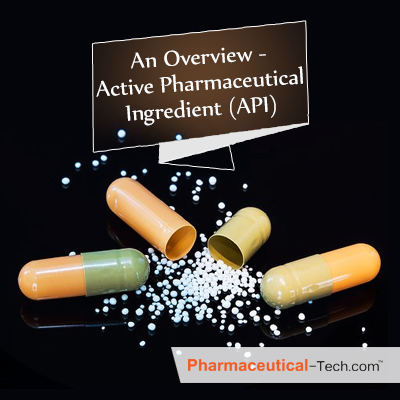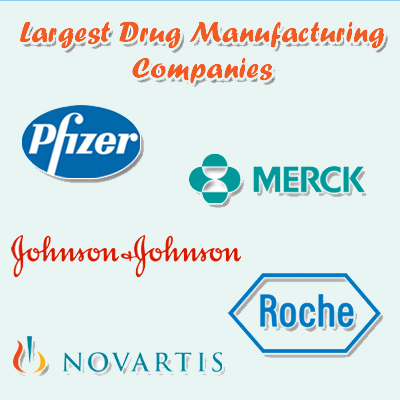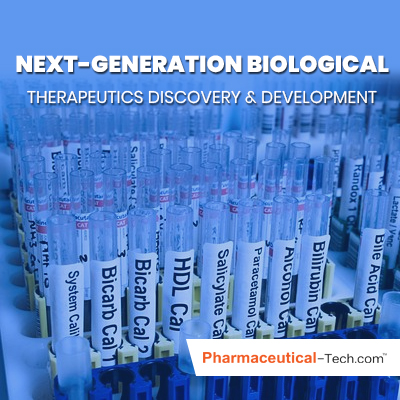An Overview - Active Pharmaceutical Ingredient (API)

Introduction
Active Pharmaceutical Ingredient (API) is the term used to refer to the biologically active component of a drug product i.e. tablet, capsule.
Generally, drug products are included with various components. Among them, Active Pharmaceutical Ingredient (API) is the primary ingredient. Other ingredients in drug products are known as 'excipients'.
These substances, which make up a variable fraction of the drug product, are required to be biologically safe. The procedure for optimizing and composting the mixture of components used in the drug is known as 'formulation'.
APIs are used for pharmacological activity in the diagnosis, cure, mitigation, treatment, or prevention of disease or to affect the structure or function of the body.
Market Overview - API
The global Active Pharmaceutical Ingredient (API) market size was valued at US$158.15 billion in 2018 and is expected to expand at a CAGR of 6.8% over the forecast years.
The key factors that drive the market are the advancements in API manufacturing and growth in biopharmaceutical sector. Moreover, increasing geriatric population across the globe is one of the reasons that contribute to the market growth.
In addition, increasing frequency of infectious diseases and Hospital-Acquired Infections (HAIs) are expected to fuel the market growth during the forecast period. Rising number of cases of neurological, cardiovascular, and genetic disorders is anticipated to augment the growth further.
Benefits of APIs
Following are the benefits of Active Pharmaceutical Ingredient (API):
• Lower risk of drug interaction
• Increased understanding of the drug and its action
• Increased compliance from the patient
• Better acceptance of the drug’s side effects and symptoms
Processes to manufacture APIs:
APIs are generally manufactured through a variety of processes that include:
• Chemical synthesis
• Fermentation processes
• Recombinant DNA
• Isolation and recovery from natural sources
• A combination of these processes
Pharmaceutical Manufacturing: Active Pharmaceutical Ingredients and Final Formulations
Pharmaceutical manufacturing involves two general steps. First one includes the conversion of raw materials into Active Pharmaceutical Ingredients (APIs).
API production is a highly sophisticated, technically demanding chemical and biochemical fermentation and/or synthesis process. These ingredients comprise a considerable portion of the total cost for a drug.
For instance, on an average, 40-50% of the cost of goods sold for generic oral solids comes from APIs. On the other hand, commodity API manufacturing tends to be a high-volume, low-margin business where economies of scale play a key role. The average commodity API profit margin is less than 10%.
The second step in pharmaceutical manufacturing involves the final formulation of the drugs. The final formulation belongs to the manufacturing sector.
During this process, APIs are first mixed and excipients i.e. other non-active ingredients and then either press the mixture into pills and tablets or prepare powders for solutions. Finally, pack the product (tablets or capsules) for the product or private market.
Moreover, final formulations need various skills and equipments compared to API manufacturing. Manufacturers can produce fifty or more final formulations in a single plant with adaptable equipments. Profit margins for final formulations can range up to 20-30%.
Generally, firms trade Active Pharmaceutical Ingredient (API) on the open market or they use them to do final formulations manufacturing. Firms that manufacture both APIs and final formulations will purchase and buy APIs on the merchant market as all firms cannot manufacture the required API and final formulations to manufacture the final product.
For instance, consider Dr. Reddy's, am Indian firm that manufactures both APIs and final formulations, charges internal pricing on its APIs (i.e. if Dr. Reddy's final formulations division wants to use an API manufactured at a Dr. Reddy's plant, it will have to pay the API division an internal transfer price).
And, another example includes, Matrix Laboratories, (an Indian firm that is currently becoming a wholly-owned subsidiary of Mylan Pharmaceuticals, a US firm) that manufactures both APIs and final formulations for HIV drugs. The company also sells some of the HIV APIs it manufactures to other final formulation competitors.
In general, the API market is very competitive and has a wide range of producers. There are 2, 056 firms that gave 3, 700 manufacturing sites globally.
APIs - Proposed Regulatory Changes
• The Active Ingredients must be listed immediately below the brand name, with the first letter of the active ingredient directly below the first letter of the brand name.
• The active ingredients must have equal prominence with the brand name on the front/main panel of the label.
• For improved differentiation between the brand name and the active ingredient there should be a difference in font style or letter spacing or font colour.
• The active ingredient should begin with an uppercase letter but the remainder should be in lower case.
• Products containing day and night preparations, different formulations, the composition of each tablet must be provided immediately below the brand name and the font size must be less than 2mm in height on the main/front panel.


